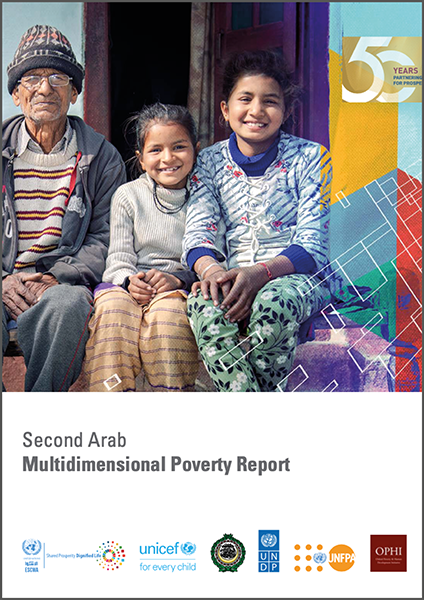Second Arab Multidimensional Poverty report
Even before the onset of the COVID-19 pandemic, Arab countries were facing daunting challenges, including conflict, instability, displacement, high rates of material deprivation and unemployment, and increasing financial pressures that all affected poverty and efforts to reduce it. The pandemic and the war in Ukraine have exacerbated money-metric poverty and deprivations in several dimensions relating to household capabilities.
This report describes and analyses the extent, characteristics and evolution over time of multidimensional poverty in Arab countries. It reveals trends over the last decade and discusses the impacts on poverty of the multiple crises affecting the region, highlighting elements of progress and stagnation in poverty reduction efforts. It also sets out a way forward by laying out policy recommendations that remain valid and important after the first Arab Multidimensional Poverty Report. Linking development policies and programmes to the poverty indices used in this report could help to design better-targeted initiatives that reach the poor and address the severity and complexity of poverty.
This report updates the multidimensional poverty profile published in 2017 and accounts for sub-regional differences by using the most appropriate Multidimensional Poverty Index (MPI) framework tailored to reflect the severity of poverty prevalent in a sub-region. It adopts a revised version of the Arab MPI framework and applies it to six middle-income countries and the State of Palestine to capture moderate levels of household poverty. The report combines analysis of multidimensional poverty measured at the household level using the MPI with measurements of child poverty based on the Multiple Overlapping Deprivation Analysis (MODA) approach, which has been adapted to the context of the Arab region. This method focuses on the situation of children, with the child as the unit of observation. Multidimensional poverty in the least developed countries (LDCs) is analysed independently using the global MPI framework, which captures more severe levels of poverty.
This report is the result of three years of policy debate, research and regional consultations in cooperation between the League of Arab States, the United Nations Economic and Social Commission for Western Asia (ESCWA), the United Nations Children’s Fund (UNICEF), the United Nations Development Programme (UNDP), the United Nations Population Fund (UNFPA) and the Oxford Poverty and Human Development Initiative (OPHI). The Council of Arab Ministers of Social Affairs approved this report pursuant to its Resolution No. 969 (regular session 42) (26/1/2023).
Citation: United Nations Economic and Social Commission for Western Asia (ESCWA), and others (2023). Second Arab Multidimensional Poverty Report. E/ESCWA/CL2.GPID/2022/4. Beirut.



